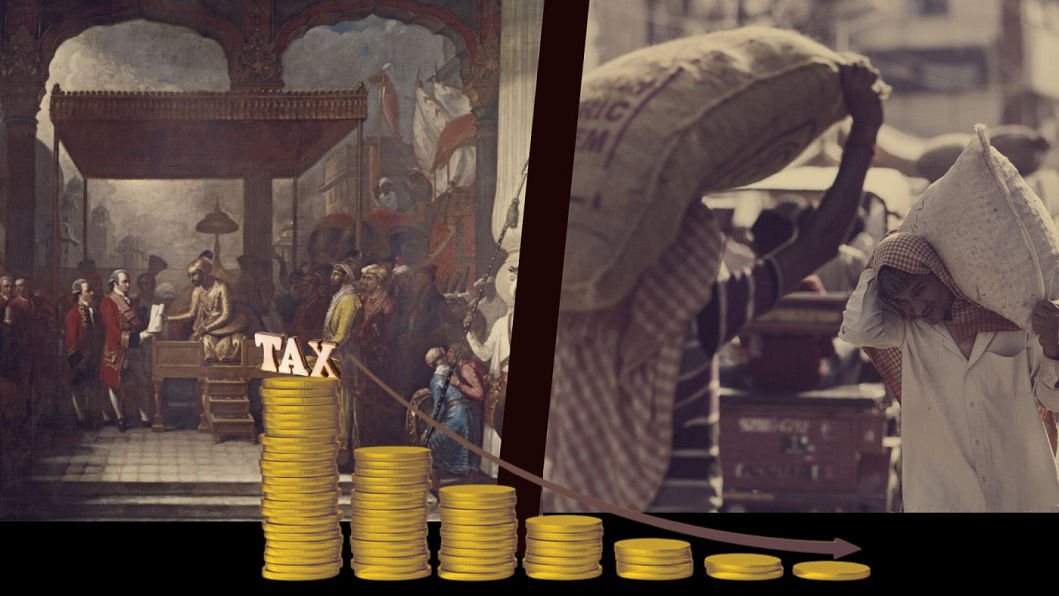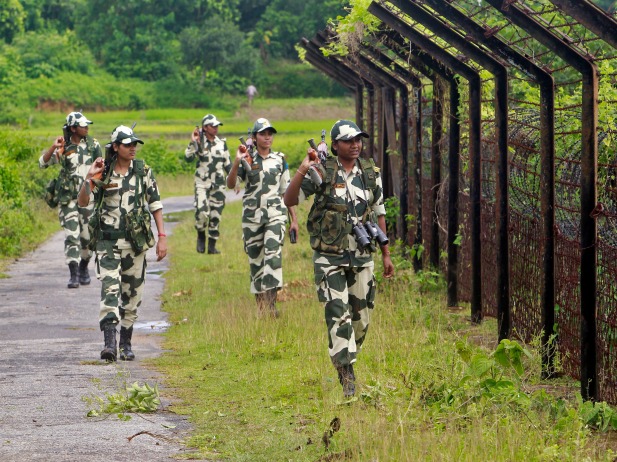
Last update on: Mon Jun 2, 2025 08:00 AM

In the forthcoming 2025-26 budget, two pressing questions warrant urgent attention: how to bolster domestic resource mobilisation and how to secure financing to mitigate post-Covid poverty and income losses. These questions are not merely fiscal but are deeply entwined with historical ironies and systemic failures that continue to haunt the nation’s development trajectory. A third concern, whether the budget will offer a path out of the debt spiral, was discussed in this newspaper on May 25, 2025.
The first irony lies in the colonial legacy of resource extraction. During British rule, India was drained of 30-50 million pounds annually in the late 19th century, as estimated by economist Dadabhai Naoroji. Even during the Bengal Famine of 1943, which claimed millions of lives, Bengal remained a revenue engine for the empire, contributing 10-15 percent of British India’s total tax income.
Today, Bangladesh, a post-colonial state, struggles with a tax-to-GDP ratio of 7.4 percent, far below South Asia’s average of 10-12 percent and the global developing-country average. This reveals a stark paradox: a nation once exploited for its revenue now grapples with mobilising resources for its own people.
The second irony is embodied by Lord Beveridge, architect of the UK’s post-World War II social security system, who was born in Rangpur. His birthplace remains one of the poorest regions, with a poverty rate of 24.8 percent—6.1 percentage points above the national average of 18.7 percent, according to the Bangladesh Bureau of Statistics. This juxtaposition underscores the failure to translate historical legacies into equitable policies.
The British established a centralised revenue system with salaried district collectors, replacing traditional intermediaries like zamindars with British-trained officials to ensure efficiency. Meticulous land surveys, cadastral mapping, and digitised records minimised corruption and enabled precise tax assessments. Over time, systems like the Permanent Settlement reduced intermediaries, allowing direct taxation of peasants. The British strategically monetised the economy through cash crop cultivation—indigo, opium, jute, and tea. The strategies of administrative rigour, agrarian exploitation, and institutional coercion ensured revenue extraction for the coloniser, a contrast to the equitable system the post-colonial state now aspires to, as reminded by the July 2024 uprising.
The roots of failure lie in an economy dominated by patronage networks. Tax evasion and illicit financial flows cost the country Tk 226,000 crore in the 2022-23 fiscal year, with corporate tax evasion alone accounting for half of the staggering loss, according to the Centre for Policy Dialogue. Multinational corporations exacerbate this by siphoning off $3-5 billion annually through abusive transfer pricing practices, according to the State of Tax Justice 2024 report.
The regressive nature of Bangladesh’s tax system further entrenches inequality. While indirect tax accounts for 66 percent of NBR receipts, 38 percent of revenue comes from the VAT, disproportionately burdening low-income households. Only 1.4 percent of people filed tax returns. Affluent elites exploit loopholes, such as non-resident status claims and the misclassification of business profits as tax-exempt agricultural income.
The VAT system, though holding immense potential, is crippled by millions of retail businesses operating under the guise of “small shops,” evading taxes by falsely reporting annual turnovers. Only 5.5 lakh out of over three crore businesses—around 2 percent of the total—are registered for VAT in the country, as per the NBR. The informal e-commerce sector is operating without VAT registration.
Customs administration is flawed. According to Global Financial Integrity, the country lost approximately $8.27 billion annually, on average, between 2009 and 2018 from misinvoicing of import-export goods. The average loss of customs and taxes during this period was 17.3 percent of Bangladesh’s trade with all its trading partners. Besides, the legal limbo fosters corruption, as seized goods languish in warehouses, vulnerable to unauthorised release or resale.
To address these challenges, the budget can present a reform strategy and a well-thought-out implementation plan. Here is a sketch of five pillars of the reform agenda:
First, institutional restructuring is imperative. The NBR should be replaced with an autonomous agency, which can be called the Bangladesh Revenue Authority, to oversee tax collection, alongside a separate Bangladesh Tax and Tariff Commission to design policies.
Second, the outdated tax code requires modernisation to prioritise progressive direct taxes, simplify compliance, and mandate digital payment systems, with emphasis on enhancing the tax net, including offices at the upazila level.
Third, technology-driven surveillance systems, such as a national Tax Identification Dashboard integrating electricity bills, bank transactions, and land records, must be implemented. Blockchain-based tracking for bonded warehouses and AI-powered risk assessment tools could curb fraud.
Fourth, an effective transfer pricing law is required, mandating master and local file submissions for multinational corporations, imposing hefty penalties on profit-shifting, and enforcing country-by-country reporting to ensure global profit transparency.
Fifth, a green tax framework can be introduced, including a carbon tax (e.g., Tk 1,200 per tonne) on high-emitting industries like cement and textiles, with revenue directed to a climate resilience fund.
The country is facing a polycrisis, with the World Bank estimating that the national poverty rate will rise from 20.5 percent in 2024 to 22.9 percent in 2025. There are critical challenges in harnessing the demographic dividend due to low education and healthcare spending—currently at 2 percent and 2.34 percent of GDP, respectively—alongside poor learning outcomes and a high youth Not in Education, Employment, or Training rate, standing at 41 percent nationally and 62 percent for women.
An ageing population, projected to reach 21.3 percent aged 60 and above by 2050, places considerable strain on healthcare and social systems, as per UNFPA.
Rapid urbanisation and increasing population density lack corresponding economic productivity gains. Under moderate and worst climate change scenarios, the country could lose 5-7 percent of GDP, indicating the high-risk level of the country to climate change. These multifaceted challenges risk undermining sustainable growth, hindering progress towards the Sustainable Development Goals.
Currently, government allocations for social protection are inadequate and marred by corruption, with social safety net programmes (SSNPs) often targeting specific groups through relief-based approaches, while beneficiary selection remains erroneous and politicised, rather than being elevated to universal, rights-based entitlements. Over 100 fragmented SSNPs need to be brought under a unified administrative authority.
Many hope that the budget will propose a “Universal Lifecycle-Based Social Security System,” a transformative initiative that could play a crucial role in overcoming “low social traps” stemming from livelihood crises, ensuring citizens are not left behind and are resilient to economic shocks. Such a system would be a fitting tribute to the July 2024 martyr, Abu Sayed, who grew up in Babanpur village of Pirganj Upazila in Rangpur, the same district where Lord Beveridge was born.
Dr Rashed Al Mahmud Titumir is professor at the Department of Development Studies, University of Dhaka.
Views expressed in this article are the author’s own.









